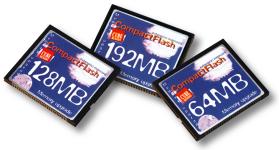In een artikel op EE Times wordt informatie gegeven over twee nieuwe concepten die door Intel worden ontwikkeld en mogelijk de huidige flashgeheugens kunnen gaan opvolgen. De eerste is plastic geheugen, officiëel PFRAM (Polymeric Ferroelectric RAM) genoemd. De voordelen hiervan zijn dat er geen transistors gebruikt worden en dat de grondstof erg goedkoop te maken is, waardaar de prijs tot acht keer zo laag kan worden. Ovonyx Unified Memory (OUM) is het tweede concept dat in opkomst is. Het 4Mbit prototype werkt met dezelfde materialen als CD-RW schijfjes, maar kan door middel van electriciteit worden gelezen en geschreven in plaats van met een laserstraal. Dit is niet alleen goedkoper, maar ook nog eens een stuk sneller dan de bestaande methode. Aan beide technieken moet echter nog een hoop werk verricht worden:
This would cost about one-eighth the cost of CMOS memory," he said. "It is very inexpensive to make." With a write time of about 50 microseconds, it is slower than the single-microsecond write time of NAND flash, but it is still fast enough for most consumer applications, and Lai said the price difference would make it a preferred choice of current flash technology. "We think this is a very good technology for removable memory cards," he said. Intel has not disclosed any data on when these new memories may become commercially available.
[...] To date, the company has made this concept work in single cells and has produced a 4-Mbit test chip. However, Lai stressed that a lot of work remains before it can be commercialized. Even so, the early results show much promise. With read and write times of 100 nanoseconds, it is much faster than current flash technologies, and just as nonvolatile. Lai said it is less expensive to produce than flash and easier to integrate into standard logic processes. "I don't see anything that says this won't work," he said. "We are ready to see if we can make this into a high-volume product."

